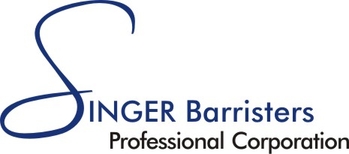If your plaintiff is an undischarged bankrupt for any period of time during a tort action, you will be required before disbursing settlement funds to obtain a release from your client’s trustee in bankruptcy.
This article provides a simple overview of the interplay between tort personal injury settlements and the Bankruptcy and Insolvency Act (BIA).
First of all, there is no need to worry about the impact of the bankruptcy on your legal fees or disbursements. It is by this point trite law that the amount of the settlement or award to be calculated, if any, in the bankruptcy context is net of legal fees, disbursements and HST.
Section 67 of the BIA requires that the bankrupt’s assets (property) vest in the trustee for the benefit of the creditors. Sec. 68 of the BIA sets out a scheme dealing with “income,” specifically for the payment of “surplus income” earned during the period of bankruptcy.
Surplus income is defined in Sec. 68 of the BIA and more particularly calculated through the directive published by the Superintendent in Bankruptcy.
The actual calculation of surplus income is based on location, family size, and certain other obligations of the bankrupt. Using the metrics prescribed by Sec. 68 and the directive, a maximum allowable income to be earned without being fettered by the trustee is determined for the bankrupt. Beyond that, the amount is considered surplus, generally half of which is payable to the trustee.
It is well settled law that general damages in a personal injury action for pain and suffering are neither “property” nor “income” of the bankrupt and thus nothing on account of generals has to be paid to the trustee.
Similarly, the Ontario Court of Appeal in Conforti (RE) [2015] ONCA 268 held that settlement proceeds for housekeeping and future care costs are akin to general damages in that they are monies which are personal to the plaintiff and as such are neither income nor property under the BIA.
This leaves for discussion the important characterization of proceeds of settlement for income loss, loss of future earning capacity and loss of competitive advantage.
The determining factor of whether any of the lost income settlement (past or future) is payable to the trustee will depend on the time period for which the income is notionally payable. To the extent that the time period and the bankruptcy overlap, that portion of the lost income settlement which falls into the period of the bankruptcy will be payable as surplus income to the trustee.
The issue arose in Conforti (RE) and was fleshed out over three decisions. Initially, the trustee sought to have the lost income settlement characterized as “property” of the bankrupt, which would mean that all of the proceeds would vest in the trustee. At Conforti (RE) [2012] ONSC 199, Justice Wilton-Siegel determined that while the settlement was not “property,” it was indeed “income” pursuant to Sec. 68 of the BIA.
The issue of allocation of lost income to the trustee then went before Spence J. Conforti (RE) [2012] ONSC 2656. The trustee sought to have the entire lost income portion of the settlement declared as income in the year it was received, which would thus open the entirety of those proceeds to exposure of the trustee.
Justice Spence disagreed with the trustee and held that the proper allocation was to determine what portion of that lost income was attributable to the years of the bankruptcy.
The Court of Appeal Conforti (RE) [2015] ONCA 268 upheld the reasoning of Spence as to the apportionment but tinkered with his calculation to more precisely line up with the actual period of the bankruptcy. The cumulative result of these decisions provides a method by which to calculate the amount of a lost income settlement that will be attributable to income of the bankrupt.
Simply put, this is done by pro-rating of the years of the bankruptcy against the total number of years for which the lost income is payable.
In Conforti, the plaintiff was being paid future lost income for a notional period of 15 years — the date of the settlement until age 65. The period of this that overlapped with the bankruptcy was two years (post-accident date of bankruptcy to date of discharge). Therefore, the Court of Appeal took a practical approach and allocated for the benefit of the trustee a pro-rated amount of 2/15 of the lost income amount which was be plugged into the surplus income calculation and thus available to the trustee.
It should be noted that awards for loss of competitive advantage will be treated the same as loss of future income claims.
Clever personal injury lawyers, wanting to maximize the recovery for their clients, might be tempted to allocate in the minutes of settlement all of the money for general damages. While this may work in certain instances, the reality is that Justice Wilton-Siegel found, and the Court of Appeal endorsed, a purposive approach to treatment of the monies.
It is not what the words of the settlement say, but what they actually mean. If your client has never returned to work since the accident and is unlikely to in the near future, then it would be difficult for a court not to consider some allocation of the award as lost income.
Darryl Singer is a Toronto-based litigation lawyer at SINGER Barristers Professional Corporation, with experience in both bankruptcy and personal injury matters.
